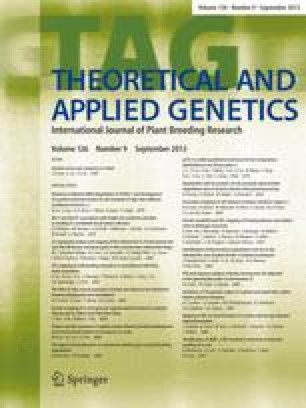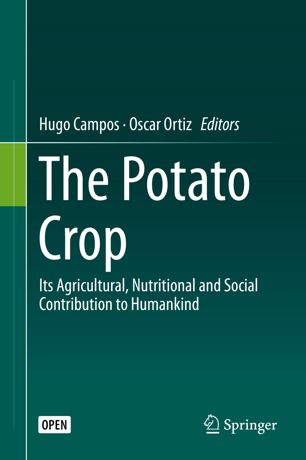Seed systems are complex and diverse and can vary enormously depending on the crop and country. They need to be carefully developed according to demand. A recently published special issue in Outlook on Agriculture entitled Demand driven seed systems suggests that realistic ambitions must be established to determine which farming households can be served by current approaches. The papers collectively argue that a wider and more diverse range of partnerships will be required to broaden the reach of seed systems. As an example of the diversity amongst crops and countries, the special issue presents contrasting RTB seed systems of cassava seed systems in Rwanda and yam systems in Nigeria, next to contributions addressing seed system issues in other crops and countries.
Seed systems are essential in providing farmers with quality seeds and form the critical links that connect breeders and farmers. The transition to One CGIAR has reignited discussions around crop breeding priorities and seed systems’ development. “This special issue is a result of discussions among CGIAR scientists and partners who are working to help One CGIAR develop a coherent and coordinated seed system research program,” said Conny J.M. Almekinders, co-leader of the RTB cc 2.1 cluster, a specialist in farmer-based seed systems with Wageningen University & Research and co-editor of the special issue.

Two researchers collecting information on farmers’ preferences for different sources of potato seed, Kenya. Photo credit C. Almekinders/WUR
Cassava seed systems in Rwanda need to be tailored
The study by Kilwinger et al. looks at entry points for commercial business models for supplying cassava planting material to smallholders in Rwanda. Farmers in Rwanda are dependent on local cassava varieties and informal seed sources. This dependency has contributed to the spread of cassava viral diseases. Farmers can help reduce future disease outbreaks by using improved planting materials available through formal seed sources that assure seed quality. Seed business models can help increase the availability of, and farmers’ access to, such materials.
The research looked at whether, how, and under what conditions the commercialization of seed delivery can guarantee a better supply and access to quality planting materials. In Rwanda, two viewpoints on seed delivery are widely recognized. Some believe commercial, profit-driven business models should be the drivers of seed value chains, while others see no reason to turn current models that hinge on more informal relations within communities into models of economic capital. The authors show that in the case of cassava in Rwanda there are limited opportunities for sustaining a commercial business model.
“We found that more commercial-oriented farmers have better access to formal seed sources,” said Fleur Kilwinger, a researcher with Wageningen University & Research and lead author of the paper. “Nevertheless, the majority of farmers in all categories accessed new varieties and quality cassava seed via informal channels.”
Cash investments in seed were mainly made by better-off farmers, who made one-time investments to acquire a new variety. The researchers noted that further development of viable cassava seed business models would require clarifications on the differences between farmers and their willingness to pay, the roles of seed degeneration, cost-benefit analysis, value propositions, and profit formulas.
“We concluded that tailoring seed business models can have a high potential as it acknowledges differences among farmers,” said Kilwinger. “But careful coordination is needed to ensure that one approach or intervention does not contrast with and/or undermine the others.”

An adaptive menu of demand profiles and seed business models related to
SDG-based impact pathways. Seed demand profiles are defined by the combination of demand type and characteristics. Demand type refers to the seed buyer. Demand characteristics includes variety traits (like variety or product profiles) as well as characteristics of the seed (e.g. its quality), seed packaging, characteristics of transaction, and delivery points. Article Copyright © 2021 Authors, Source DOI: 10.1177/00307270211054111.
See content reuse guidelines at: sagepub.com/journals-permissions
Nigeria’s yam seed system is informal yet functional
The seed situation of cassava in Rwanda contrasts with the situation of seed yam in Nigeria, another vegetatively propagated crop. Stuart et al. describe a yam seed system in Nigeria that is dynamic and commercial. Yam is an important food and cash crop in Nigeria. The study describes local practices characterizing yam cultivation and the farmer-based seed systems in five states in Nigeria.
Nigeria’s yam seed system is largely informal but appears to function well. There is a high demand for, and a high turnover of, seed yam. The low multiplication rate and degeneration of seed yam lead farmers to frequently acquire fresh seeds and replace varieties. Consequently, farmers are keen to invest in seed, which in turn creates opportunities for distinct business models compared to cassava in Rwanda.
The study found some farmers specializing in seed yam production but less than expected for such a highly commercial crop. The market is the major source for off-farm sourced seed yam, and although completely informal, the seed yam sector is vibrant and well organized. The identification of strategically positioned farmers and traders can offer opportunities and entry points for the introduction of new varieties and improved seed production techniques.
“Our findings show that ware and seed yam are dynamic and highly commercialized goods in Nigeria,” said Esmé Stuart, a researcher with the International Institute of Tropical Agriculture (IITA) and lead author of the paper. “We feel that building on the existing farmer-based system is a more logical strategy than replacing it with formal structures and legislative regulation.”
Pursuing realistic ambitions
The studies in Rwanda and Nigeria show the complexity of diverse seed and variety needs and the challenges in developing an effective demand orientation that exists in RTB crops. Demand for seed in RTB crops has unique features as compared to seed crops. This brings in special challenges around developing demand-driven seed systems. The paper by Mausch et al. in the special issue emphasizes the diversity in demand for seeds that the seed supply has to cater for. “While the cases of cassava in Rwanda and yam in Nigeria show how different the challenges can be within RTB crops, we should also see the important similarities with, for example, the small grain crops,” said Almekinders. Continuing to learn across crops and contexts of seed demand is of paramount importance for the future success of seed system work in the One CGIAR, they reckon.
“We have to be realistic in our ambitions,” said Almekinders in the editorial introducing the special issue. She suggests that giving a priority focus on accelerating the uptake of newer varieties by farmers who have already been reached is a sensible goal. “We will need to develop other approaches and gain new partners if we wish to attempt to broaden the reach to the more difficult and complex seed demands of rural households who are only partially engaged in markets and living in more marginal environments.”
###
Cluster CC2.1 (Access to quality seed/ varieties) under RTB’s Flagship project 2 strives to learn from and support other clusters across all crops to improve the economic sustainability of RTB seed systems in providing quality seed of demanded varieties.



